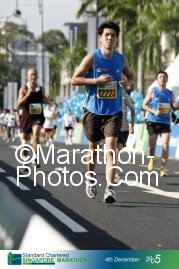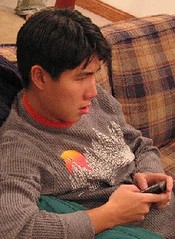Film Review: King Kong
This is not to say that the film has no flaws and narrative loop-holes and unrealistic CGI moments. But the real story here is that King Kong is more than just a monster flick, animated blockbuster or tale of the big screen superheroes.
First off, looking beneath the veneer of King Kong as a popcorn spectacle is the story of the white man's fear of "The Other". The original King Kong was made in the late 1920s during the Great Depression. Movie houses and vaudeville theatres were risque distractions for the common men from the woes of unemployment. Suitably so, the protagonist of the film is a blonde woman, in a white dress, being taken hostage by "The Other". In this instance, instead of a male ethnic-minority, the threat is from its less evolved cousin, a black monkey.
A typical salacious story for the time, the tale depicts the ape as a threat to the white man's woman and his thwarted masculinity. As if brute strength is not enough, the white man has to resort to his finest weapons of tanks and fighter planes to down the threat from the top of the Empire State Building - the ultimate phallic symbol of western white man's masculinity and power.
Now going back to Jackson's version, and why I enjoyed it. There is the sense that Jackson tries to embellish on the larger epic of the story without sacrificing the more superficial attractions of the spectacle. Beginning brilliantly with the cross-cutting of vaudeville acts with news footage of breadlines, and to a jazzy, upbeat musical score, Jackson is immediately suggestive of the complexity of the subtext that is to come.
His Ann is a fuller and more multi-dimensional character that epitomizes her true role in the story as the pawn/eye candy by being a stage comedian. Similarly, Kong is more than an exercise in special effects as Jackson injects much personality into him. This is most evident in the ice-skating rink scene when Kong rummages through Central Park, behaving much like any child would.
Jackson also espouses on the theme of masculinity as the undercurrent to the King Kong story (see above). His heroes in the film are not the macho, beefy action heroes, but rather an emaciated-looking, bookish author. Jackson plays this up by countering Adrien Brody's Jack Driscoll with the cowardly matinee actor, Preston, who is more in love with himself, and having Ann mistake a more dashing character for Jack.
Jamie Bell's adolescent character, though shortchanged in his character development, furthers the inquiry into the definition of masculinity with his interaction with the only black character in the film, who incidentally is sacrificed early on for being the only heroic and brave person on the boat.
But Jackson never loses sight of the escapist, big entertainment component of the King Kong story despite its slow beginning. The film is divided into 3 distinct acts, much like a vaudeville performance. The sense of anticipation and the budding romance are slowly unravelled in the first act, against the backdrop of fatalistic financial and moral bankruptcy.
The second act is a roller-coaster ride into the world of Skull Island, with the requisite doses of computer animation, memorable battle scenes (where we realize that Kong is not exactly the king of the jungle but has to work hard to stay on top) and extended scenes of hair-raising creatures. This is also the act where Jackson hints at white man's fear of "the other" through the encounter with the human residents of Skull Island (the men responded by wiping them out).
The third act returns the cast to New York and the so-called civilization, albeit after an temporal ellipse. Now, the characters have gone their separate ways. Kong follows in the trail of beauty only to meet his ultimate death. Elegiac and patient, the final climax before Kong's demise is drawn out to evoke much empathy. Jackson's mastery of the craft shows up here as he convincing turn Act 2 from an exploitative monster adventure to a well-earned and tragic romance in Act 3. Another other lesser director would have fared badly.
Although King Kong is 3 hours long, the tale of beauty and Kong is a much more elaborate and brutal tale of masculinity, subversion, escapism and exploitation hinged on the relationship of two persons. Numerous flaws abounds in some of the characters development (eg. Why did Preston turn into a action hero for 10 mins in the middle of the movie?).
But on the bigger scale of the movie, and the grander scope of the story, Jackson's King Kong is a monumental effort that is rewardingly entertaining.
to read more...





